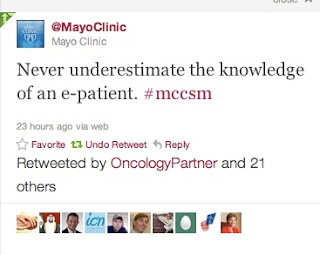 |
| Brain & Tina Sapp |
Guest Blog: A unique perspective about the importance of vascular imaging from a Vascular Technologist and a husband of a FMD patient.
By Brian Sapp, Lead Vascular Technologist and PACS Administrator at Piedmont Medical Center
Are you finding FMD at your facility? If you are not, chances are that you may not be looking for it. FMD or fibromuscular Dysplasia is a disease that effects primarily the renal arteries, carotid arteries, mesenteric, and iliac arteries in young adults.
The disease process is most common in women who present with controlled or uncontrolled HTN, TIA, or CVA between the ages of 30-55. The mean age is 36. FMD is not an arteritis and has no known etiology, however it is believed to be triggered by hormones (women and age). FMD usually is left side dominant.
On ultrasound usually you will see laminar flow at the origin of the renal or internal carotid artery then abrupt bruit with increased diastolic velocities in the mid or distal renal/internal carotid artery. On arteriogram a string of beads is the classic sign of FMD. In severe cases the beading is seen on ultrasound. FMD is often overlooked in the carotid artery due to the lack of b-mode plaque visualization and sampling is not performed far enough distally to see the turbulence. Being aware of the patients history and age should key you in on FMD.
Three main things to let you know to look further are :
- Young female with bruit.
- On HTN medication.
- Elevated diastolic velocities bilaterally without plaque formation.
All of these should point to the technologist to look as far distally as possible. FMD is treated by angioplasty and patients generally have very good outcomes. Dissection of the carotid artery and aneurysms are ramifications of undetected FMD.
Tina's story:
Eight years ago I started a job with the Vascular Institute of Georgia, a large vascular surgery practice in Atlanta. Tina was the manager and lead technologist. She had taken blood pressure medicine for a short period the year before during a personal time of stress. Working with such a large group of technologists the subject came up one day, I of course asked to scan her renal arteries. She stated that they had already been looked at earlier by another tech and that they were fine.
I don't take no for an answer and insisted to take a peek. Her left renal artery had an unusual look to it had very laminar flow proximally and then took a sharp turn when her diaphragm was relaxed. Her velocities were elevated with her diaphragm relaxed and reduced when she took a breath in and the artery appeared to straighten. I told her it was FMD she said it was a kink and that the velocities were still well under a 3.5 ratio. When Tina said it was due to a kink, well that was the end of it (if you have ever met her she is indestructible and tough as nails).
The story moves to 18 months later, I have moved to my current employer and we became involved. Tina had been placed on Diovan and her BP was well controlled. One evening we went to the local fair and the kids asked her to ride the scorpion, well she got stung. Upon leaving the ride she looked gray, was sweating profusely and became very nauseated. Needless to say she has never ridden another ride at the fair, thankfully she did survive. I immediately asked to scan her renal arteries as we had a trip to Disney planned in a couple of months. Her left renal artery had developed a full time bruit and the end diastolic velocity was very high, even though the systolic was only moderately high (borderline 3.5). She had also developed an increased color bruit in the distal right renal artery.
At age 37 the diagnosis of FMD was made and confirmed under arteriogram, she had successful angioplasty and is currently being monitored every six months and is on Cozaar. Tina fit all of the parameters as far as age, being of the female sex, having a bruit on the left renal artery. However being a vascular tech herself, she didn't want to accept her condition initially because of her ability to control her blood pressure with one medication. This is the most important facet to her story. Anyone who is female and develops a need for blood pressure and fits the age group in my opinion should have a renal artery duplex.
About Brian: I have been performing Vascular Ultrasound for 15 years. I am a very busy person and currently hold several hats. I am a full time employee of Piedmont Physician Group as the administrator of the radiology PACS system and Non-invasive vascular laboratory. I am a working manager, meaning I scan patients every day. I am also a consultant for both CareFusion and Registered Vascular Solutions Inc; a company I founded 5 years ago. I am married to Tina Sapp who is the manager of Saint Josephs outpatient vascular lab in Atlanta Georgia and a recent graduate of the University of West Florida with a Masters in Health care Administration. Her laboratories produce approximately 14000 high quality studies a year. We have three children together ages 16, 13 and 8. We both are very passionate about vascular testing and vascular education.
Follow Brian:
Blog
4mylegs.com














